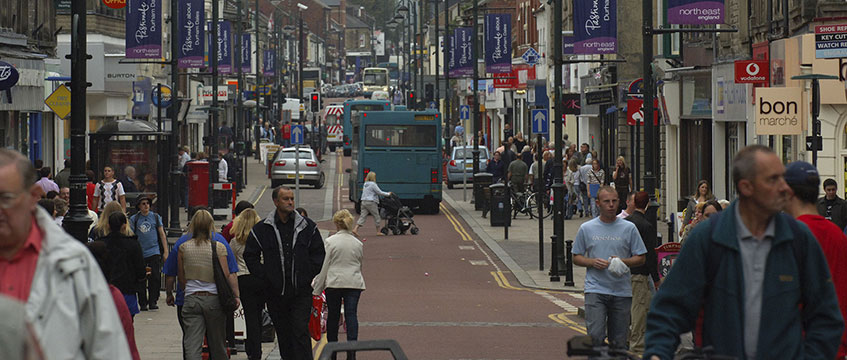Rents across the retail sector will decline by 2% in 2020, according to the latest research from Knight Frank.
Central London is expected to see rental growth of 2%, but rents at all other types of destinations are forecasted to fall.
The agency predicted that rents at standard shops elsewhere in the country will drop by 4%, with shopping centres down 2.3% and retail warehouses decreasing by 1.8%. Supermarkets will also inch downwards, by 0.9%.
All retail is forecasted to achieve total return of just 1.1%, depressed by further depreciation of capital values by 4%, mainly caused by valuation lag.
Yields are predicted for soften across the board. Prime shop yields will move out to 6% on average and regional shopping centres to 6.50%, while the equivalent for open A1 out-of-town fashion parks will widen to 7%.
The average yield for solus bulky retail warehouses will broaden to 7.5%, but food stores leased with RPI increases are expected to remain relatively stable at 4.25%.
Knight Frank said there will be no return to underlying capital growth until 2022, although this is likely to come sooner for some assets (especially out-of-town) through yield correction.
Annual average total returns between 2020 and 2024 are forecast to be 4.9%, despite a five-year annual average capital decline of 0.3% and a five-year annual average rental decline of 0.1%.
Stephen Springham, partner and head of retail research at Knight Frank, said: “The UK retail market is not going to a stage a Lazarus-style recovery, nor is it a case of waiting for the storm to pass.
“At the same time, the high street most definitely has a long-term, sustainable future, and it is short-sighted to write off the whole retail sector as many are doing.”
High street investment
While prime high street values have fallen across the board, the report noted that these declines have been “relatively modest” compared with other retail sub-sectors.
Alistair Bird, high street investment partner at the agency, said investor sentiment towards certain locations is evolving as affluent ‘cathedral towns’ that were once in vogue such as York, Chester and Harrogate have “fallen from grace”, on the back of strong competing out-of-town centres, lower footfall and unaffordable rents.
“Conversely, we are seeing stronger demand than ever for Greater London locations (zones 2-5), especially those with strong or improving transport links such as Ealing, Wimbledon, Uxbridge, Romford and Twickenham,” he said.
“These locations will remain popular with retailers as they are vibrant, accessible, busy centres providing young and growing populations.”
Shopping centres
Meanwhile shopping centres have suffered falling values and trading volumes for more than four years – with values plummeting by more than 50% in some cases.
However, Charlie Barke, shopping centre investment partner, pinpointed “pockets of value” emerging out of the sector’s “carnage”. These included local and neighbourhood retail schemes.
According to Barke, investments showing a running yield of around 8% represented a “decent premium” to other sectors if property owners were comfortable with them generating at least 8% income return for the next few years, even without growth.
Barke also said he expected to see a “number of new players” acquire shopping centres in 2020, “attracted by the counter-cyclical opportunity and unusual market dynamics the recent distress has left”.
Out-of-town retail
In terms of retail warehousing, Dominic Walton, out-of-town investment partner, noted that investment volumes have plunged by around 40% compared with the previous year.
“The rising level of occupational costs over recent years has created significant over-rent across most schemes, some more than others (especially shopping parks comprising comparison goods or fashion retailers),” he said.
“Similarly, historic rental levels have created unsustainable rates payable. Combined with weak tenant demand, the medium term picture is of nil rental growth.”
Walton highlighted ongoing interest for retail warehousing both in and close to London from investors attracted to potential alternative use opportunities, such as residential or industrial.
“We are seeing such investors adopting a longer term investment approach in this space,” he said. “Further away from London and the South East, existing use values will need to move out massively before alternative use values compete.”
Supermarkets
The report found that investor sentiment for supermarkets remains relatively strong, with prime, long income, index-linked assets selling at sub-4%. That said, over-rented or oversized stores with OMV reviews in marginal locations have sold at around 7%.
“The devil is in the detail and purchasers are quite rightly becoming increasingly obsessed with the occupational trading story – there are examples of expensive mistakes having been made, with red-faced investors left with vacant stores,” said Richard Petyt, foodstore agency and development partner.
He added: “The discounters’ growth continues apace. Investor sentiment to the format has strengthened, with some prime location deals reported at sub-4%.
“There is a strong focus on gaining representation in London and the South East. This represents an expensive expansion requiring non-standard store formats.
“This is potentially a risk in the medium term, given the higher operational costs inevitably faced, weighed against a very tight low operating cost model. Committing to high rents which increase with indexation will surely lead to over-rented stores. Perhaps a ‘portfolio approach’ to profit generation is driving this.”
To send feedback, e-mail pui-guan.man@egi.co.uk or tweet @PuiGuanM or @estatesgazette











